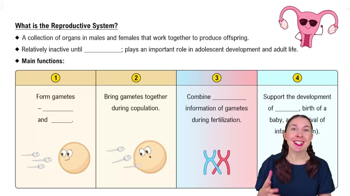Which of the following ligaments does not attach to the ovaries?
a. Lateral cervical ligaments
b. Broad ligament
c. Ovarian ligament
d. Suspensory ligament
e. All of these attach to the ovaries
 Verified step by step guidance
Verified step by step guidance Verified video answer for a similar problem:
Verified video answer for a similar problem:

